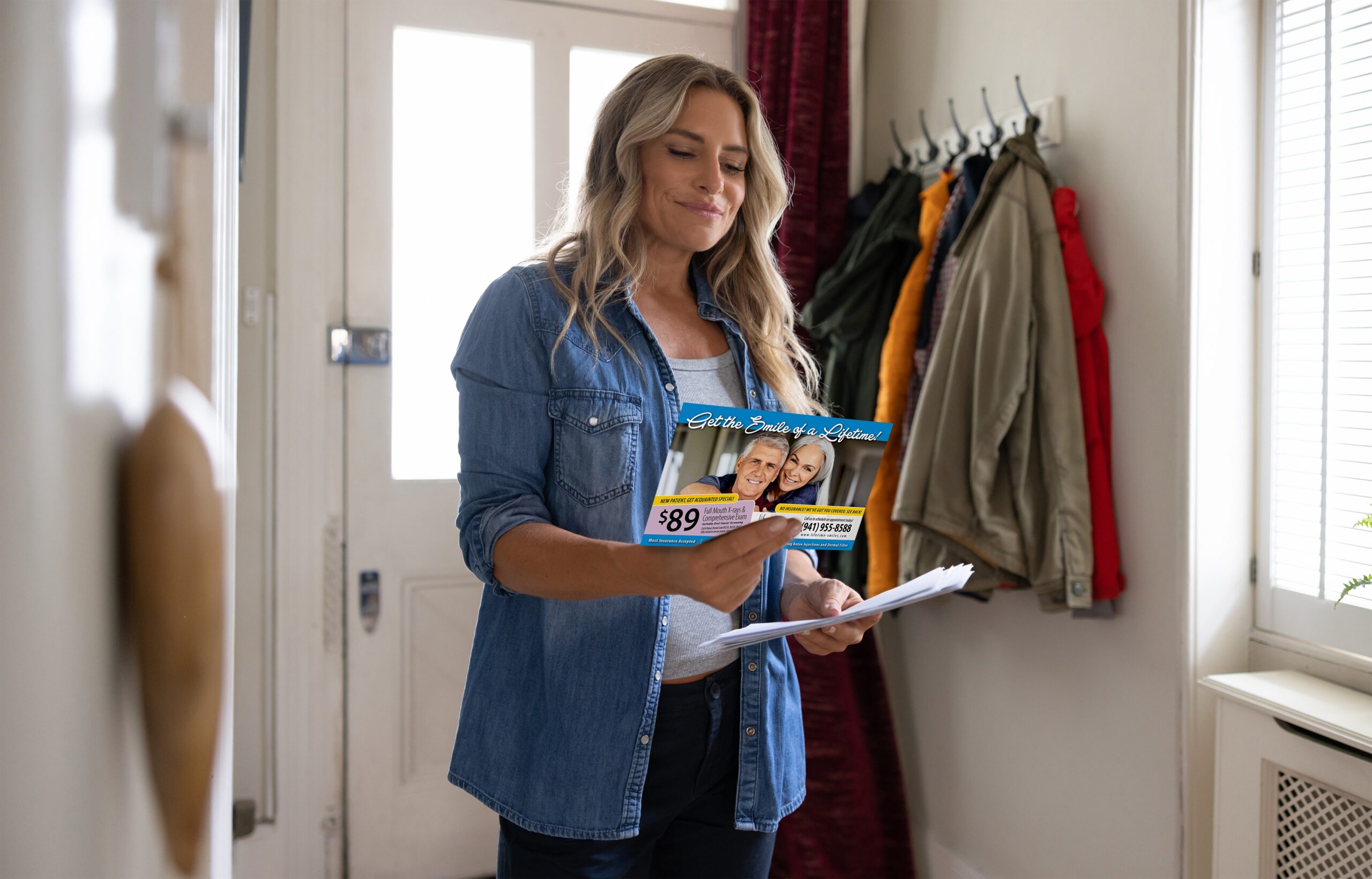
Understanding Direct Mail – How To Save Money On Postage Costs
Mark Hale ‐ January 28, 2014
 An overview of postage rates, classes and terminology for the direct mail beginner.
An overview of postage rates, classes and terminology for the direct mail beginner.
If you’ve done any mailing at all, you’ve found that postage is the largest expense of a direct mail campaign. Thus anyone who wants to become a true success with direct mail must become familiar with the post office and how postage works. If not, you’ll end up spending a lot more money in postage or risk something going wrong with your postcard affecting your results.
Increase Direct Mail Response Rates By 40%, Find Out More!
Classes of Mail
There are several classes of mail commonly used to send post cards. The key differences between these classes are their level of priority and their cost:
First Class Mail is the mail class that you are using when you put on a manual stamp. This type of mail is given the highest priority and is generally delivered within 1-4 days depending upon where in the country it is sent and received. Return service and forwarding service are included.
Standard Mail is commonly used for mailing advertisements and promotions as it costs substantially less than First Class. Often mistakenly called “bulk mail”, standard mail is given lower priority at the post office and can take anywhere from a few days to as long as a couple of weeks to be delivered. Usual delivery time is about 5-10 days, but it depends upon the distance traveled and, more importantly, on post office workload. Not recommended for time sensitive or dated mailings, particularly during holidays or elections. Undeliverable pieces are not forwarded or returned to sender.
Non-Profit is a special type of standard mail that qualifies for lower rates. The priority and delivery details are the same, it simply costs less. It is only available to legally non-profit entities.
Other Classes: There are other postage classes that are used for newspaper and magazine mailings, larger size mail pieces, etc. but for the purposes of the usual post card mailings, these do not apply.
Common Confusion
A common confusion is that “bulk mail” is actually not a class of mail. Though often used incorrectly to refer to standard mail, “bulk” simply means that you are sending a lot of mail at once.
Bulk mailings can be sent using any class of mailing and are handled by a special part of the post office that is set up just for large mailings.
If your mailing is being prepared using an “indicia” with a “postal permit”, it means it is a bulk mailing and the postage is being paid directly to the post office, instead of via stamps or a postage meter.
How to Save Money
First of all, keep in mind that anyone who tells you they have “a better rate” is not telling you the truth. The post office publishes a standard set of rates and rules and these are available to everyone. There are no companies out there that have some special deal with the post office.
However, there is a great deal of variation on how well people know the post office’s rules and how they use them to prepare your mailing. Someone who knows the postal rules well and can fit them best to your particular situation will often save you a lot of money.
Here are some of the basic ways this is done:
Automation – Using special software, we can verify the quality of a client’s mailing list and print on a special barcode in addition to the address. The post office can now use a machine instead of a person to sort that mail and this saves a lot of time. In exchange, the USPS gives a big discount on the postage rates.
Saturation or High Density Mailings – It’s a lot easier for the post office to deliver 1000 postcard to a single neighborhood, than to deliver 1000 postcards to 1000 different homes all over the country. For that reason, you can get substantial discounts for mailing to a high percentage of people in a geographic area. Often mailings of this type sacrifice the ability to target a specific type of customer, but if the product you are selling has appeal primarily as a result of someone’s location, it can make lots of sense.
There are a number of additional ways to prepare mailings and other details on how to save money while still satisfying whatever deadlines or requirements may exist for your mailing.
It’s not necessary that you are an expert on them to do a mailing, but your direct mail company should be. Make sure that they take the time to ask you what your timetables, deadlines and requirements are and recommend options to help you meet your needs at the lowest postage cost possible.
Summary
Be familiar with the basic postal classes and which are most appropriate for the specific mailing you have planned.
Ensure that the direct mail company you choose to handle your mailing has the experience to prepare your mailings right. They should make recommendations about how to accomplish your objectives and save you money.
Using this advice, it is our hope that you can stretch your marketing budget even further and send out a lot of post cards. Because that is the way that you’ll truly BOOM your business!
Mark Hale
CEO
High Quality
Printing And Design
Our Services
- Postcard Printing
- Business Brochures
- Booklet Printing
- Flyers
- Signs and Banners
- Customer Thank You Cards
- Websites
- Custom Pocket Folders
Join 1,000s of
happy customers






